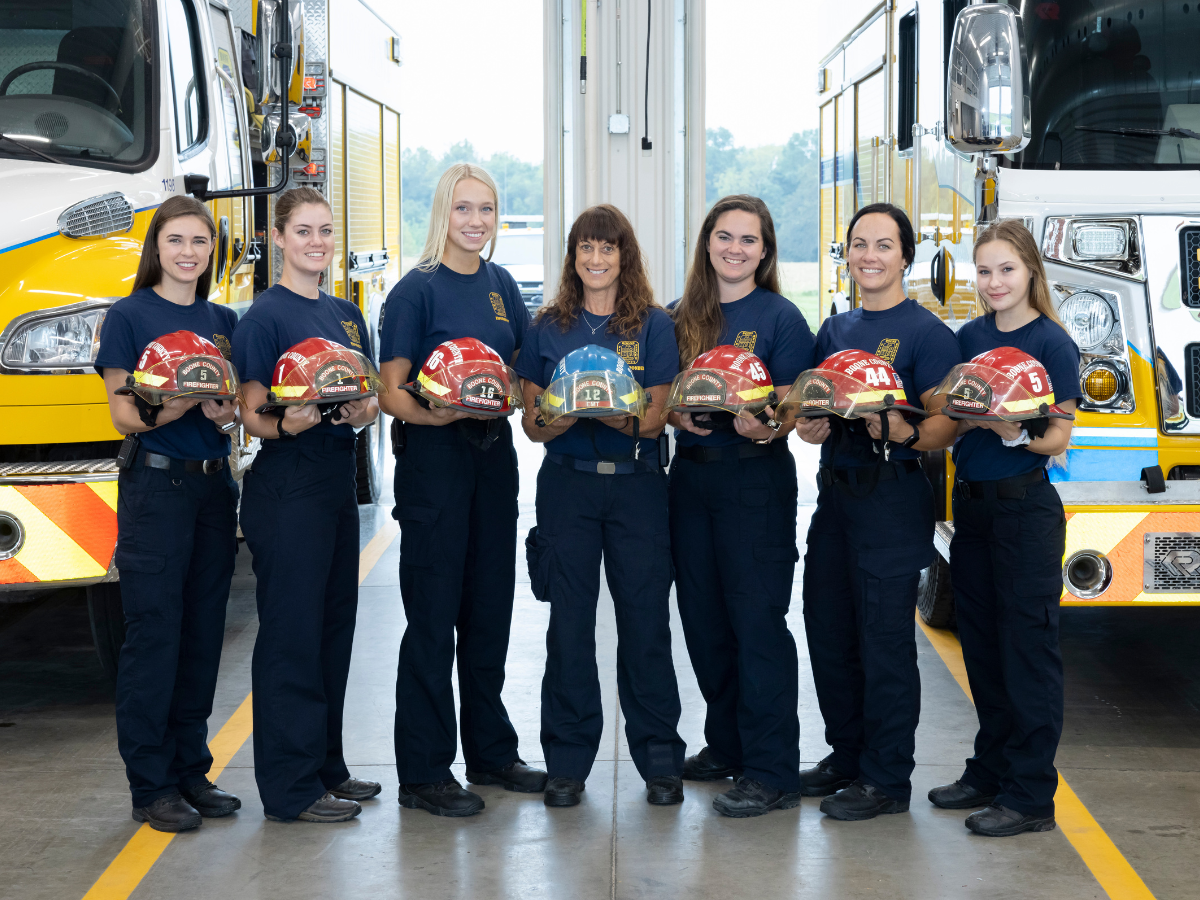Serving the Whole Community: Celebrating Women’s History Month with Women in Fire
March 26, 2024
Practical tips for diversity, equity, and inclusion in your community
 March is recognized nationally as Women’s History Month, which provides an opportunity for the fire service to recognize the positive impact female members have on fire and rescue departments. It is also a time to consider how to enhance efforts to recruit and retain women and update policies that help keep the entire community safe.
March is recognized nationally as Women’s History Month, which provides an opportunity for the fire service to recognize the positive impact female members have on fire and rescue departments. It is also a time to consider how to enhance efforts to recruit and retain women and update policies that help keep the entire community safe.
Women in Fire provides education, support, and advocacy for fire service women and those who support them. Women in Fire’s Amy Hanifan provided more information on how fire departments can recruit, retain, and serve women in their community.
Tell us about your role at Women in Fire.
As the past-president of Women in Fire, I have the opportunity to stay engaged with projects that promote inclusive practices, including hands-on training, best practices and policies, mentoring, health and wellness education, recruitment/retention education, and more.
How is fire service recruitment and retention the same or different for women as men?
One thing that we encourage departments to reflect on when recruiting is whether the person being recruited can visualize a place in the organization simply by looking at the marketing materials or department web site. In talking with the generation coming into the fire service, they do their homework and review department social media, public meeting videos, and pictures on the web site and consider whether they feel as if they belong there.
As for retention, ensuring that policies and practices are in place to meet family leave needs, specific to maternity/paternity leave, shows that an organization is proactive in their preparation. In addition, having a return-to-work plan for women coming back from maternity leave is needed as well. It shows value to members when they can family plan without having to also help the organization write a new policy or plan. It also ensures volunteers that they know they will have a spot waiting for them when they’re ready to return.
Are there any special considerations for reaching women in the community in other department outreach?
Many communities have found value in reaching out to youth at the middle school or high school level. This is typically the age that young adults begin to start forming their career path and future plans. There are several fire camps around the world that provide an opportunity for young people to experience the fireground through hands-on activities or educational sessions with public servants. Some of these camps focus on women’s empowerment. Providing a safe space to inspire women and allow them to gain confidence in performing the skills, without the potential judgment of a real-world setting, can be very helpful. Youth camps allow for an exploration of the job in a unique atmosphere, which has been found to be very successful.
What are current challenges facing women in the fire service?
There are many projects that Women in Fire is involved with to address some of the challenges that are being faced in the fire service. To best address these issues, Women in Fire is working with researchers at The Center for Fire, Rescue, and EMS Health Research to ensure resources are rooted in science and based on research findings in the fire service. Projects include addressing gaps in recruitment and retention, reproductive health impacts and providing resources for firefighters and their physicians, and working to identify needs of women in wildfire settings.
There is sometimes conversation about family impacts, though as the generations change their work-life balance practices, this concern tends to be more equal among those already in the fire service.
The Women in Fire International Conference can provide a safe learning atmosphere, with two days of hands-on skills training and two days of classroom sessions. Some women may be the only female in their organization, leaving them unable to connect with someone else who may hold a similar perspective or could provide advice. Attending a conference for these women may be impactful, as it provides a different resource. The atmosphere is dynamic and uplifting, and I would encourage anyone to consider attending.
How can departments implement policies that are more inclusive for their own members?
To provide inclusive, best practice policies, there has to be a well-rounded team in place. This may include chief officers, company officers, human resources, firefighters, and any other members of the organization who may have insight to the task at hand. Certainly, it helps to bring a diverse group of people to the table regarding background, experience level, culture, gender, and perspective. Some policies may not warrant a large team to review or establish. If an organization has a goal of establishing a family leave/return to work policy post-pregnancy, it may warrant a larger policy review team. A best practice would be to implement any state or federal laws in applicable policies.
What’s your advice for men who want to be allies for women in the fire service?
Allies make a great difference in the world and the fire service is no different. I would encourage allies to continue supporting women. I’d imagine this could be a bit hard at times; it may not always be easy to stand up for others. If it weren’t for allies, though, the fire service would likely look a bit different. One of my greatest supporters was thoughtful about providing opportunities to women when others may not have. This led to more diverse teams and in turn broadened the perspective with team projects or policy review.
More often than not, when someone goes out of their way to encourage or support another person, the success of the team is much greater. In short, my advice would be to be brave and confident in supporting those who may not have the fullest support in the first place.



